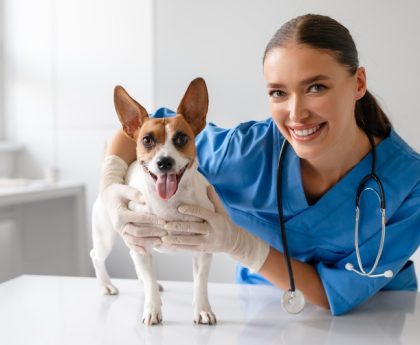We all love our pets like they’re part of our family, and when they’re in distress, it can be as concerning as any other family member getting sick. But it’s not always clear when a trip to the vet can wait until tomorrow and when it requires immediate emergency care.
We will walk through some scenarios and signs to help you make that crucial decision—because acting fast can sometimes save your furry friend’s life.
Recognizing the Signs of a Pet Emergency
Similar to humans, pets can experience a range of illnesses and injuries that might need urgent attention. Here are some of the most critical signs that indicate your pet needs to see a vet straight away:
-
Difficulty Breathing: If you notice your pet struggling to breathe, gasping for air, or choking, it’s time to seek emergency care.
-
Severe Pain: Continuous crying or whining, sensitivity to touch, or an inability to get comfortable are clues your pet is in acute pain.
-
Excessive Bleeding: If you can’t control your pet’s bleeding with pressure or if it’s spurting blood, head to the vet immediately.
-
Seizures: While one seizure may not be an emergency, multiple seizures or one lasting more than a few minutes in.
-
Poisoning: If you suspect your pet’s gotten into something toxic, don’t wait for symptoms to show. Time is of the essence with poisons.
Crucial First Steps in a Pet Emergency
When you spot one of these signs, take these crucial first steps:
-
Don’t panic. We know it’s easier said than done, but staying calm is vital for your and your pet’s well-being.
-
Remove any danger. Ensure that whatever caused the issue, like an open electric wire or a toxic plant, is out of reach.
-
Contact your vet or an emergency vet clinic. Quick, professional guidance can make a big difference in outcomes.
Understanding the Severity of Emergencies
Not all emergencies are the same. Some require immediate, life-saving interventions, while others may allow more time to act. Here, we’re sorting out the urgency and giving you a clearer picture of what situations warrant rapid action.
Trauma
If your pet has been hit by a car or suffered a fall, even if they seem okay, internal injuries can be severe. Always play it safe and get them checked out right away.
Sudden Collapse or Unconsciousness
These symptoms can indicate severe conditions like heart disease or internal bleeding and should always be taken seriously.
Ingestion of Dangerous Substances
Eating something dangerous, such as chocolate for dogs, many human medications, or lilies for cats, can be life-threatening. Don’t wait for signs of poisoning to appear to act.
Providing Palliative End-of-Life Care
No pet owner wants to think about the end of their beloved companion’s life. However, understanding when palliative care transitions to the need for dog euthanasia is crucial. If your pet is suffering with no hope for recovery and their quality of life has diminished significantly, it’s time to have a heartfelt conversation with your vet about humane end-of-life options.
Caring for the Younger Ones
Young animals, like puppies and kittens, have unique emergency scenarios often related to their curious and sometimes reckless behavior. Preventive care like puppy vaccines in Ruckersville is incredibly important for these little guys. Always ensure they’re up to date on their vaccinations to avoid some of the more severe illnesses that can lead to emergencies.
Handling the Unexpected
Accidents and sudden illnesses can still occur no matter how well you care for your pet. That’s when knowing where your nearest emergency vet clinic is located becomes advantageous. Keep their number on your fridge or phone so you can act swiftly should an emergency arise.
Creating a Pet Emergency Kit
If you’re in a situation where you need to stabilize your pet before heading to the vet, an emergency kit can be immensely helpful. Here’s what you might include:
-
A first aid booklet with instructions for common pet emergencies.
-
Contact information for your regular vet and the closest 24/7 emergency vet.
-
A muzzle to prevent bites (pain can cause even the gentlest pets to snap).
-
Basic first aid supplies like gauze, scissors, and antiseptic wipes.
-
An emergency blanket for shock or to gently restrain your pet.
Considering Other Symptoms
Besides the cut-and-dried emergencies, some symptoms might not seem as urgent but still call for a vet visit. These can include:
-
Persistent vomiting or diarrhea, which can lead to dehydration and other complications.
-
Difficulty standing or walking, which might be a sign of trauma, pain, or neurological issues.
-
Changes in appetite or drinking habits could be early signs of severe conditions.
-
Abnormal behavior or appearance, like sudden aggression or a distended abdomen, should prompt a vet visit.
Managing the Costs of Emergency Care
We know vet bills can be daunting, and emergency care often has a higher price tag. To manage this:
-
Consider pet insurance that covers emergencies and understand the terms well.
-
Look into credit services designed for healthcare, like CareCredit, which also applies to veterinary care.
-
Ask your vet about payment plans or financial assistance programs for emergencies.
Wrapping Up
Our pets rely on us to notice when they’re not their usual selves and to act on their behalf. By watching for the signs we’ve discussed, you can be the hero your pet needs, whether rushing them to emergency care or monitoring them closely. And always remember, when in doubt, give the vet a call. They help you make the best decisions for your pet’s health and happiness.





